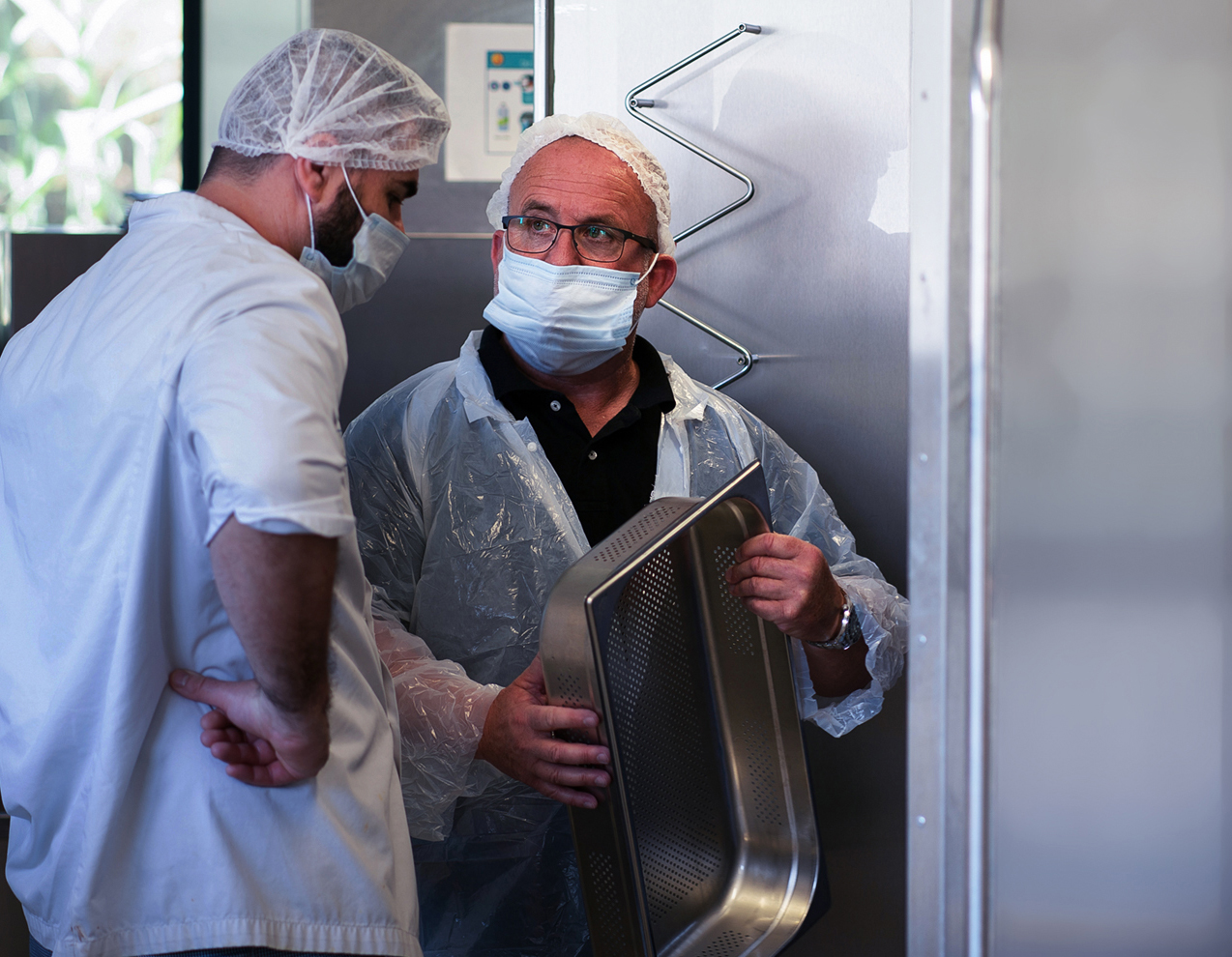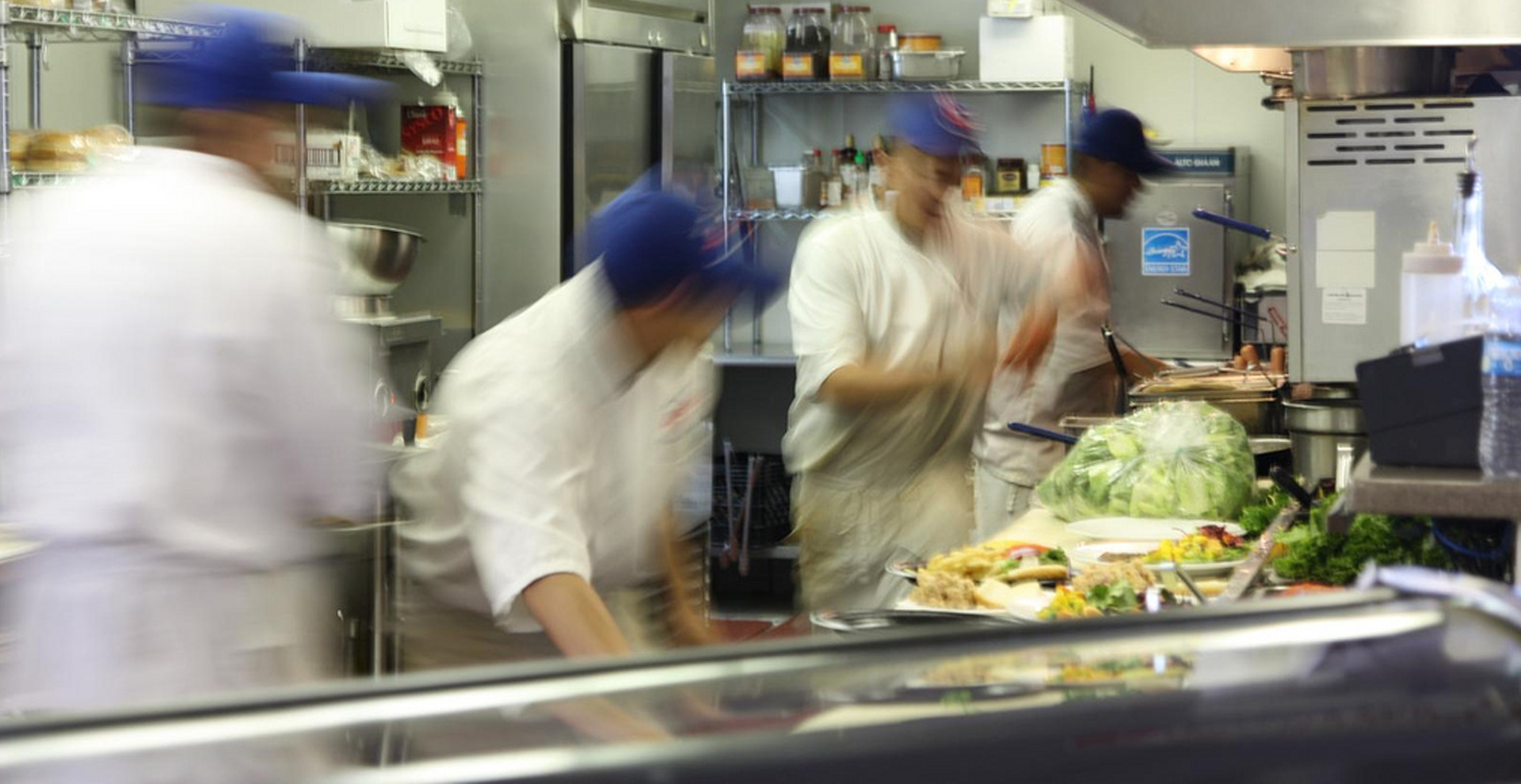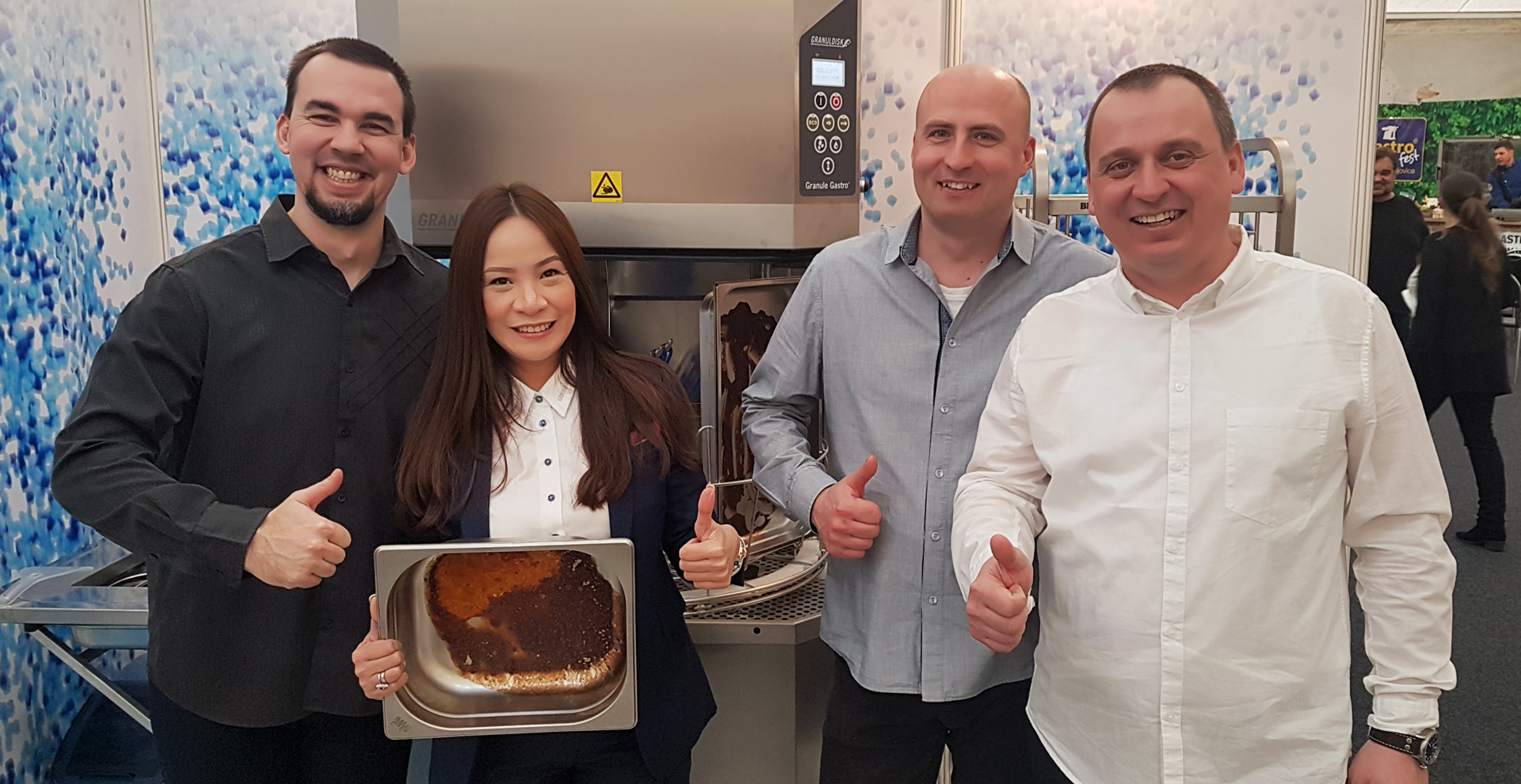2. A ware washing method that sanitises the dishes completely
Manual pot washing in a sink is the most common way to handle dirty pots and pans today. (Yes! In 2021.) By doing so, you are missing the crucial step of sanitising your wash ware and at the same time jeopardising the health and well-being of your guests or patients.
– It’s impossible to sanitise pots and pans in a manual process, as the high temperatures needed to do so would be too hot for a human to handle. The wash water temperature in a sink is generally low, often around 40-45 °C, which is not nearly enough for full sanitisation. Bacteria and microorganisms survive in temperatures ranging from -2 to +60 °C and can stay alive in sinks for more than 6 hours why manual pot washing is not to be recommended, says Ulrika Ahnfelt Gran and continues:
– A ware washing solution, should follow hygiene guidelines: DIN 10534 and/or NSF/ANSI-3 requirements. Then you can be sure that your machine provides high enough temperatures (wash temp around 65 degrees and rinse temp of at least 85 degrees) to sanitise your wash ware properly and keep your guests far away from eating food prepared and served on contaminated wares.






